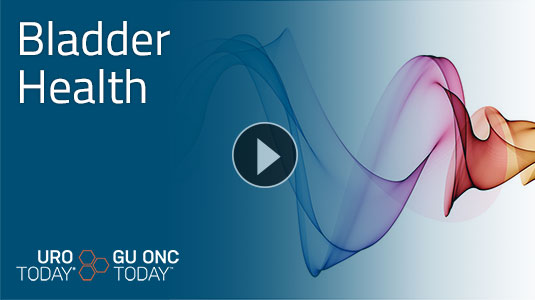- UroToday Home

- Center Of Excellence
Centers of Excellence
Pelvic Health
Welcome to the Pelvic Health Center of Excellence
Diane Newman welcomes viewers to the Pelvic health Center of Excellence on UroToday.com The leading location for state of the art lectures, original articles, research, current treatments and emerging clinical care in pelvic health and pelvic floor dysfunction. Diane encourages viewers to utilize this center as a resource for current research, clinical expertise and to stay up to date with current treatments and interventions.

Diane K. Newman, DNP FAAN BCB-PMD is an Adjunct Professor of Surgery at the Perelman School of Medicine, University of Pennsylvania in Philadelphia, Pennsylvania. She is also the Medical Director of Digital Science Press. For over 35 years, she practiced as a nurse practitioner in urology, specializing in the evaluation, treatment, and conservative management of urinary incontinence and related pelvic disorders, including the use of catheters, products, and other devices in the management of bladder dysfunction. She is an internationally recognized expert specializing in pelvic floor dysfunction and the use of conservative treatments. She has educated nurses and other health care professionals on conservative treatments for lower urinary tract dysfunction and co-authored the first edition of the SUNA Core Curriculum for Urologic Nursing. Dr Newman is currently involved in translational research including in her role as Principal Investigator of the NIH NIDDK Prevention of Lower Urinary Tract Symptoms (PLUS) Research Consortium, PENN+PLUS Clinical Research Center. She is co-investigator on the NIA An integrated exercise and bladder training intervention to reduce falls in older women with urinary incontinence and the NIH Pelvic Floor Disorders Network Clinical Sites. She is the author of more than 100 publications in peer-reviewed medical and nursing journals and has authored dozens of book chapters and seventeen books on urinary incontinence including textbooks for students, guides for clinicians, and resource books for patients and caregivers.
Common Bladder Irritants Found in Foods and Drinks
Certain foods, liquids and beverages, medications and even herbs can “trigger” your bladder symptoms. Their effect on the bladder is not always understood and the same food or liquid may affect different people and their bladders in different ways. Check the lists found here to see if any of them are adding to your symptoms. If you find one, stop them for a few days to see if your bladder symptoms improve. Then introduce it back and see if you notice any changes.
Your pelvic floor muscles provide support to your bladder, and rectum and, in women, the vagina and the uterus. These muscles are like a sling or hammock in the bottom of your pelvis which is why they are called pelvic floor muscles. If they weaken or are damaged, they do not support pelvic organs and may cause bladder control problems. Keeping the muscles strong by training them, can help prevent urine leakage. You can make these muscles stronger by doing exercises (often called Kegel exercises).
Read More
Read More
- Overview on how to use the pelvic muscles to prevent urine leakage
- Session of ten 2-second fast muscle squeezes
- Session of ten 10-second slow muscle squeezes
Listen Now Read More
- How to use the pelvic muscles to prevent urine leakage
- Session of 2-second fast muscle squeezes
Listen Now Read More
- Pelvic muscle training doing 10-second muscle squeezes
Listen Now Read More
- Pelvic muscle training doing 2-second muscle squeezes
Listen Now Read More
- Doing training sessions of 20 “quick flicks” 2-sec and 20 “slow” 10-sec slow squeezes
Listen Now Read More
Urinary incontinence seriously affects the daily ability of older males. This study compared the effect of different postures of Pilates combined with Kegel training on pelvic floor muscle strength in post-prostatectomy incontinence.
Read MoreUrinary incontinence (UI) is one of the main complications of radical prostatectomy. Electrical pudendal nerve stimulation (EPNS) has been used to treat stress UI based on its mechanism of passive pelvic floor muscle contraction reported in the previous research.
Read MoreWomen frequently suffer from urinary incontinence due to atrophic changes in the urogenital tract. Recommended conservative treatment includes evaluation of pelvic-floor strength and the functional use of pelvic-floor-muscle (PFM) training.
Read MoreTo investigate the effectiveness of supervised remote rehabilitation programs comprising novel methods of pelvic floor muscle (PFM) training for women with urinary incontinence (UI).
A systematic review and meta-analysis including randomized controlled trials (RCTs), involving novel supervised PFM rehabilitation programs as intervention groups (e.
Read MoreExcessive pelvic floor muscle activity has been suggested as a source of pain in chronic prostatitis/chronic pelvic pain syndrome (CP/CPPS). Our objective was to determine whether men with CP/CPPS have changes in neural drive that impair their ability to relax pelvic floor muscles.
Read More






